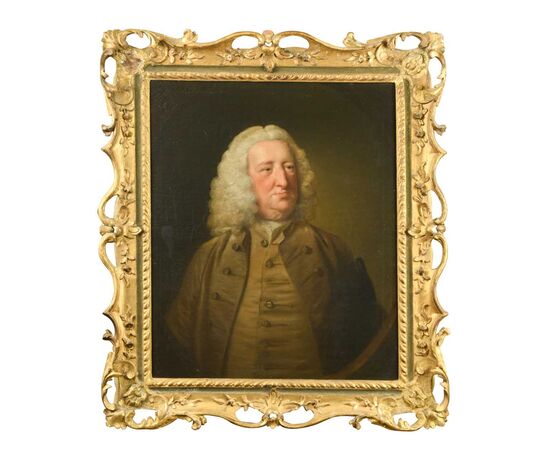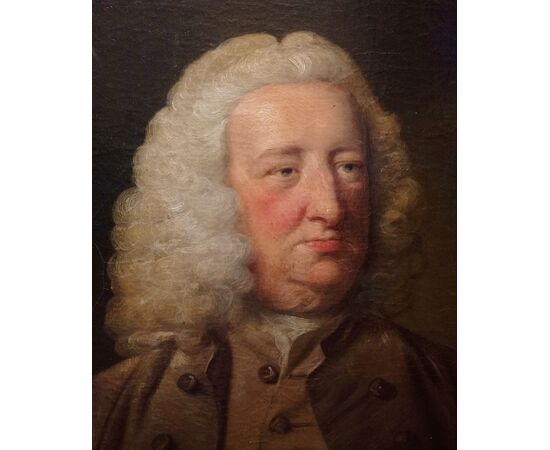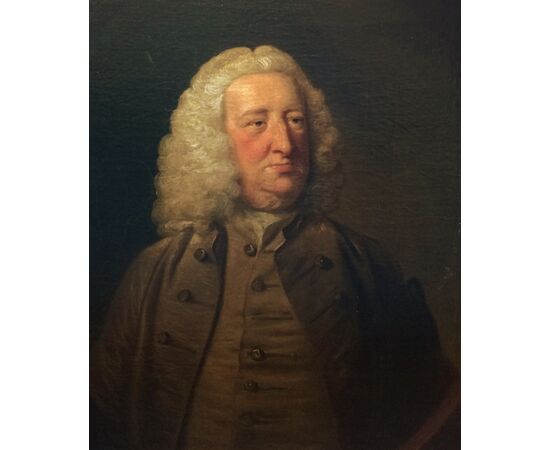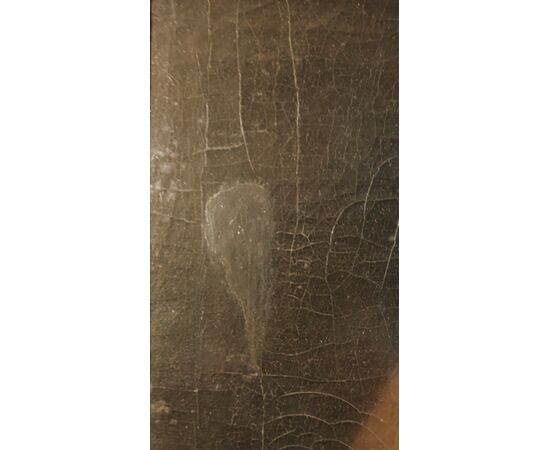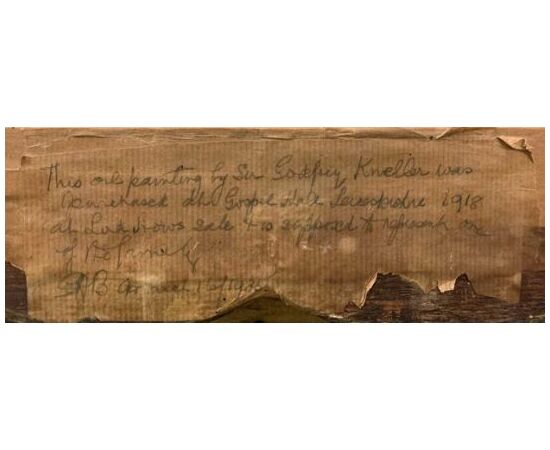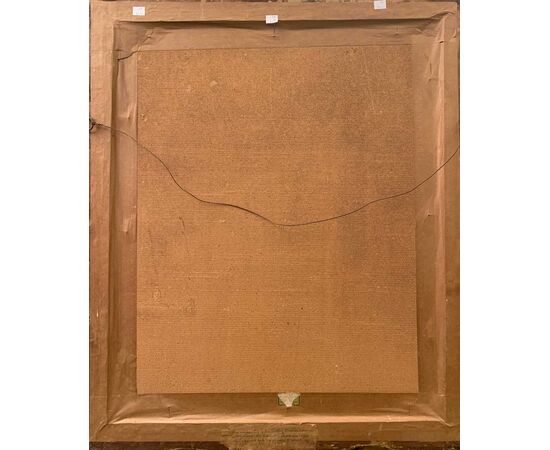Thomas Hudson (1701-1779): Portrait of Dr. William King (1760)
Provenance:
- Presumably commissioned by Charles Jennens of Gopsall Hall, Leicestershire.
- By descent to to his sister Elizabeth Hanmer (1705-1777), her daughter Esther, Viscountess Curzon (d. 1764), her son Penn Asheton Curzon (1757-1797), his son Richard William Penn Curzon (1796-1835, from 1821 Earl Howe), and subsequently the Earls Howe at Gopsall Hall until 1918.
- Sale on the premises at Gopsall Hall, Messrs. Trollope, 21st October 1918, presumably lot 1191, ascr. to Godfrey Kneller (see ill.).
- By 1935 in a UK private collection.
Dr. William King (1685-1763) was a law graduate of Balliol College, Oxford, but was principally known as an orator, poet, satirist, and leading figure of the Jacobite party in Oxford. He was introduced to the Pretender Charles Edward Stuart and also received him for tea in his lodgings. Among his fiery orations was his Latin speech for the opening of the Radcliffe Camera into which he nimbly wove his Jacobite views. He was also principal of St Mary’s Hall, Oxford (now part of Oriel College) for more than four decades, and was responsible for the rebuilding of the east side of the quadrangle. A second portrait of King by John Michael Williams is currently in the collection of the Bodleian Library and was acquired from King’s executors in 1764.
Charles Jennens of Gopsall Hall (best remembered as the librettist of Handel’s Messiah) clearly entertained good relations with the portrait painter Thomas Hudson from whom he had already commissioned portraits of himself (1745) and George Frederick Handel (1756). Jennens, as a leading nonjuror, admired William King as an outspoken Jacobite, but fell out with him when King turned his back on the Jacobite cause in 1760. The portrait must therefore have been painted before Jennens’ change of heart. I am grateful to the present Earl Howe for confirming (a) that the picture collection at Gopsall Hall had remained essentially unchanged between Jennens’ days and the sale of 1918 and (b) that none of the later inhabitants of Gopsall Hall – all stark Hannoverians – would have been likely to have commissioned a copy of a portrait of a notorious Jacobite. It is therefore most likely that this is the original portrait which Jennens commissioned from Thomas Hudson in 1760. Clearly, the identity of the sitter (and the artist) had fallen into oblivion by the time of the sale of Gopsall Hall in 1918. The painting was in all likelihood lot 1191 of the sale, fitting the description, including the canvas size, precisely; reversly, no other lot description of the extensive sale catalogue corresponds with our painting. Entry 1191 of the catalogue merely mentions ‚a gentleman‘, and the manuscript note on the reverse of the painting, dated 1935, adds ‚supposed to represent one of the family‘ (see ill.). Conclusive proof of the true identity of the sitter comes from a mezzotint after the painting engraved by James MacArdell, who produced a large number of prints after Hudson’s portraits (see ill.). The print not only identifies the sitter as Dr. William King, but also gives Hudson as the artist. Furthermore, it states that the portrait shows King at the age of 75. Together with his birth year, 1685, this allows a dating of our painting to 1760, i.e. three years prior to King’s death.

